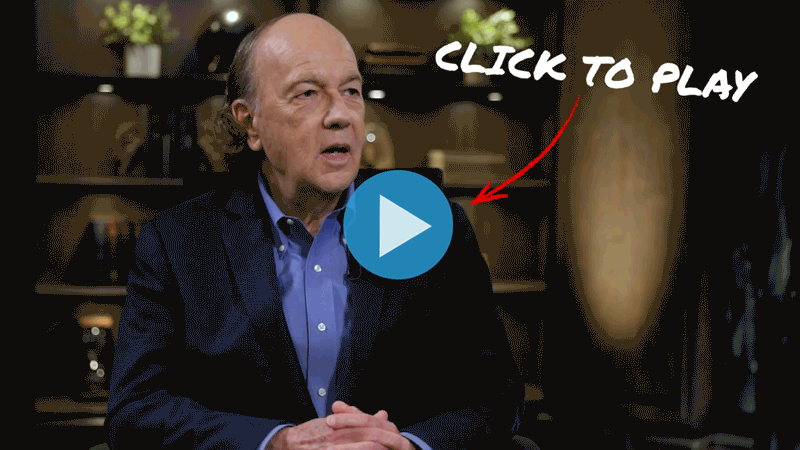

At Porter & Co. we are determined to be your best source of investing, economic, and financial insight, and your first choice for information about what to do with your money… in the entire world, bar none.
This is Porter & Co.’s Sunday Investment Chronicles. Every week, the Porter & Co. research team pores over thousands (and thousands) of articles, reports, social media posts, analyses, regulatory filings, and anything else we can get our hands (and eyes) on to understand what’s happening in the world of investing and finance – and to uncover the most original, compelling, and double-head-fake ideas…
… and we curate the best of those here. We do it all the old fashioned way: Hours of reading and brainpower (no AI curation here). We read everything – for you.
In Case You Missed It… What We Published Last Week
In Monday’s Daily Journal, Porter reviewed the performance of Porter’s Permanent Portfolio, which he unveiled at the 2024 Porter & Co. Annual Conference in September. He wrote:.
So far, we’ve handily beat the market, with a return since inception of 20.9% and a year-to-date (“YTD”) return of almost 15.4%. That’s twice the stock market’s (S&P 500) return this year…”
Good returns are nice, Porter added, but it might just be luck. What isn’t luck though is when you beat the market and take on much less risk. Porter’s Permanent Portfolio has less than half the volatility of the stock market (beta: 0.41, compared to the market benchmark of 1) while earning twice the S&P 500’s returns.
On Wednesday, in anticipation of Kinsale Capital’s quarterly earnings report, Porter shared the success of the company with readers… and a warning. He wrote:
Kinsale is the Michael Jordan of E&S insurance: no one can beat it. That’s led lots of investors into its stock. The results are so impressive that the expectations on this business are immense. And we’ve noticed that quite often when it reports earnings – no matter how good those earnings are – investors are disappointed, and the stock sells off.
I wouldn’t be surprised to see the stock suddenly fall 15% to 20% even if the company beats earnings, which I am sure it will.”
The Big Secret On Wall Street marked the third anniversary of Porter & Co.’s flagship advisory on ThIn honor of Porter & Co.’s third anniversary, we shared our first official Big Secret On Wall Street “report card” this week.
Report cards have always been a natural extension of Porter’s longtime guiding philosophy: To give my customers the information I would want if our roles were reversed.
Porter concludes… “I’m generally pleased with how we’ve done so far. But I also see plenty of room for improvement.” You can see the full report card here…
We also released a market update and portfolio review in Distressed Investing. Marty Fridson and his team see opportunities ahead in distressed investing, while also providing updates or Sell Alerts on seven holdings in the portfolio.
In the market report, in talking about the once-might company Xerox (XRX), Marty wrote:
It all goes to show that the mighty can fall if they fail to keep up with the one constant – change. It’s also true, though, that huge returns have been made in bonds of companies that declined severely. We aren’t currently recommending a Xerox bond, but over the course of 2025’s second half we’ll be identifying several securities that are characterized by faded glory, yet have greater value than the market now perceives.”
And on Friday, Porter turned the Journal over to Distressed Investing editor Marty Fridson, who introduced readers to the idea of private credit.
Many new Wall Street investment categories follow a familiar trajectory, Marty wrote:
It starts with a sound concept, hits rapid growth, then expands into excesses, followed by blowout, and then possibly reform and revival… or not.”
Ominously, Marty goes on to say, private credit moving into the excesses phases is coinciding with the product becoming increasingly available to ordinary investors through exchange traded funds (“ETFs”). The story is instructive to both debt and equity investors.
The success of private credit has been accompanied by excessive leveraging of the market’s weaker credits. So much debt has been put on companies funded by private credit that they’re at near-term risk of default in increasing numbers. Rating agency Fitch reported that of the private companies it monitors, the percentage failing to cover their interest charges by even 1.0x jumped from 7% in Q1 2024 to 17% as of May 2025.
The Best Things We Read Last Week
Out of the hundreds of sources of investment, finance, and economics news and insight we regularly review – our Bloomberg terminal, hedge-fund letters, annual reports, the financial news media, Securities and Exchange Commission (“SEC”) filings, investment newsletters, newspapers, X (Twitter) threads, conferences, podcasts, and more – here’s what we’ve read that we think you might find interesting.
The Legends Speak
Investment Ideas
Jim Rickards: “One Executive Order changes my entire ‘Birthright’ thesis…”
In his original “Birthright” presentation, Jim Rickards conservatively projected this $150 trillion mineral boom to transpire over 4 years… But Trump has just completely accelerated this timeline. What happens next will shock most Americans. Jim just recorded an urgent interview with all the new details. Watch his full analysis of The American Birthright: Phase II HERE.
